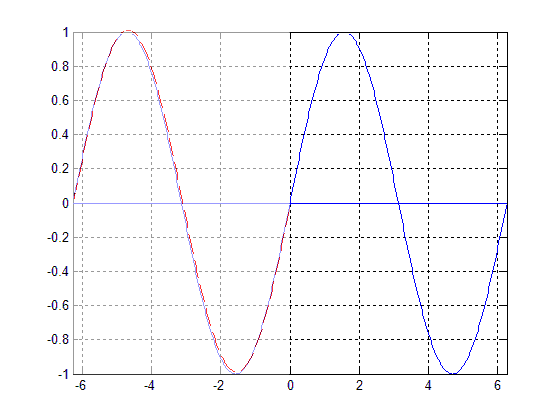(New page: ==Periodic Functions== The function <math>f(t)=sin(t+T)</math> is periodic, with a period of <math>T=2\pi</math>. This means that for <math>T=2n\pi</math>, n an integer, the function will...) |
|||
| Line 2: | Line 2: | ||
The function <math>f(t)=sin(t+T)</math> is periodic, with a period of <math>T=2\pi</math>. This means that for <math>T=2n\pi</math>, n an integer, the function will be unchanged from when <math>T=0</math>. | The function <math>f(t)=sin(t+T)</math> is periodic, with a period of <math>T=2\pi</math>. This means that for <math>T=2n\pi</math>, n an integer, the function will be unchanged from when <math>T=0</math>. | ||
| − | [[Image:Periodic_blaskows_ECE301Fall2008mboutin.gif| | + | [[Image:Periodic_blaskows_ECE301Fall2008mboutin.gif|frame|center|An example of a periodic function]] |
Revision as of 10:10, 1 September 2008
Periodic Functions
The function $ f(t)=sin(t+T) $ is periodic, with a period of $ T=2\pi $. This means that for $ T=2n\pi $, n an integer, the function will be unchanged from when $ T=0 $.


